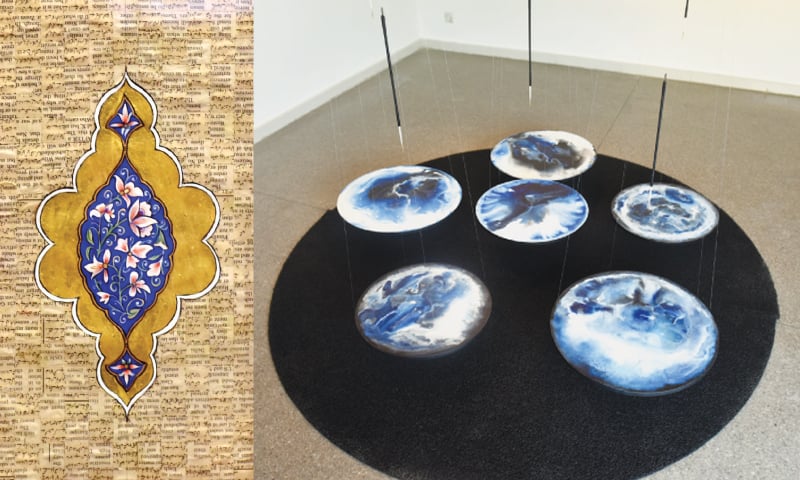
Karachi, Pakistan; In Dance of Dualities, Sayeda M. Habib presents a powerful visual narrative that addresses the contrasts inherent in human existence, not as conflicting binaries, but as opportunities for spiritual integration and transcendence. The exhibition was on display at Canvas Art Gallery and concluded on April 5, 2018.
The concept of duality in this collection isn’t simply about opposites. Rather, it explores existential contrasts — the seen and the unseen, the material and the spiritual, within the human experience. The idea diverges from traditional binaries by emphasizing contrast as a catalyst for deeper awareness and unity.
The exhibition opens with ‘Kashf’, an acrylic on canvas piece whose title translates from Arabic as “unveiling.” This refers to spiritual revelation or the unveiling of hidden truths, often associated with mystical Sufi thought. In this context, kashf symbolizes the dissolution of ego, where the heart becomes the medium for divine understanding, a theme that recurs throughout Habib’s body of work.
Rather than treating love and self-effacement as clichés, Habib frames them as tools of transcendence, rooted in ancient spiritual traditions. Her artist statement echoes this, noting that “the quest for transcendence to empower mankind through the illumination of consciousness has always been the goal of traditional societies.” This statement resonates deeply in our hyper-modern era where digital noise often overshadows the inner voice.
Throughout the exhibition, Habib plays with circular forms and orbit-inspired compositions, metaphorically reinforcing the idea that every journey, whether emotional, cosmic, or spiritual revolves around a center point of inner truth. The heart, according to Habib, is that center, and reconnecting with it is essential for overcoming the fragmentation of modern life.
This exhibition positions Sayeda M. Habib not only as a painter but as a visual philosopher, using art as a medium to reconcile the tensions of modern existence with timeless spiritual insights.
Original Source Acknowledgment:
This piece is a rephrased interpretation based on an article by Peerzada Salman, originally published in Dawn on April 5, 2018. Read the original article here: Duality, life and art – Dawn
